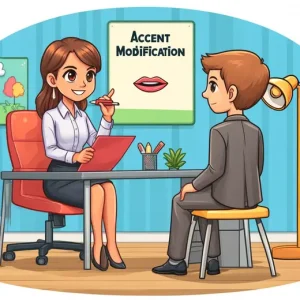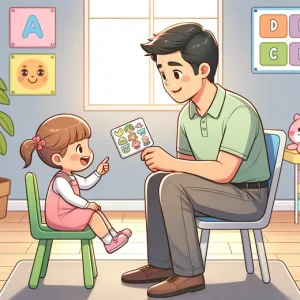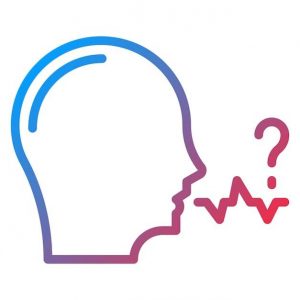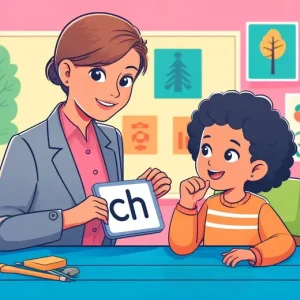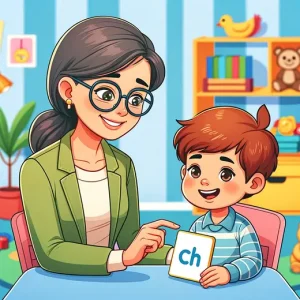Bilingual Kids: Benefits, Myths & Development
By Rajini D
Last Updated: April 1, 2024
In a world that’s more connected than ever, raising bilingual children is becoming a beautiful norm for many families. However, amidst the joy and pride of nurturing a child who can communicate in more than one language, concerns about potential language delays often surface. Are these worries grounded in reality, or are they just myths waiting to be dispelled?
If you’re reading this, chances are you’re seeking clear, reliable information on this topic. Maybe you’ve heard mixed opinions on bilingualism and language development, or perhaps you’re simply curious about how speaking multiple languages affects a child’s speech progression. Whatever your reason, you’re not alone in your quest for answers.
Understanding Bilingualism
Bilingualism isn’t just a simple label; it’s a rich and multifaceted experience that opens up worlds of opportunity for children. At its core, bilingualism means having the ability to communicate in two languages. This journey can start in one of two main ways: simultaneously or sequentially.
- Simultaneous bilingualism occurs when a child is raised in an environment where two languages are spoken regularly from birth. Imagine a household where parents speak different languages; the child grows up naturally absorbing and responding to both. It’s like being tuned into two different music genres from the start—you learn to appreciate and understand them concurrently.
- Sequential bilingualism, on the other hand, happens when a child learns one language first, and then is introduced to a second language later on. This could be due to starting school in a new language or moving to a new country. Sequential bilingualism is akin to adding another instrument to your musical repertoire; you’re building on your existing skills to embrace another layer of complexity.
Children’s brains are incredibly adaptable, making them naturally equipped to navigate the waters of bilingualism. From a young age, their minds are like sponges, eagerly soaking up words, sounds, and structures from multiple languages.
Also Read: Early Identification/ Warning Signs in child development.
Dispelling Myths about Bilingualism
Myth #1: Bilingualism Confuses Children
The Reality: Far from causing confusion, bilingualism enriches a child’s cognitive development. Children as young as toddlers have the remarkable ability to differentiate between languages. They can adjust their responses based on the linguistic context. For example, a child might speak Spanish with their grandparents and English at school, seamlessly switching based on who they are interacting with. This adaptability enhances their communication skills and cognitive flexibility, preparing them for a world where switching contexts is commonplace.
Myth #2: Bilingualism Causes Language Delays
The Reality: Research consistently shows that bilingual children develop language skills within the same age range as their monolingual peers. While bilingual children might temporarily mix languages (a natural process called code-switching), this doesn’t indicate a delay or confusion. Instead, it’s a sign of their brains efficiently navigating multiple linguistic systems. An interesting observation is that bilingual kids often develop enhanced problem-solving skills and creativity, as they’re used to thinking in two languages.
Myth #3: One Language Must Be Mastered Before Introducing Another
The Reality: Waiting to introduce a second language until the first is “mastered” is not necessary and can be a missed opportunity. Children are incredibly adept at learning multiple languages simultaneously from an early age. Introducing two languages early on can lead to more profound proficiency in both. Imagine a young child who learns to play the piano and the violin concurrently. Just as they learn to read music for both instruments, they can learn to navigate the structures and vocabularies of two languages with equal ease.
Read more: Understanding Speech Delay: Causes, Milestones, and Therapy
Recognizing the Benefits of Bilingualism
Cognitive Benefits
Bilingual children often exhibit remarkable cognitive flexibility, a direct result of navigating between languages. This mental agility enhances their ability to switch tasks, solve problems creatively, and think critically. Studies have shown that bilingual individuals have a more significant executive function, meaning they can manage complex tasks and conflicting information more effectively than monolinguals. This cognitive advantage is akin to being a mental multitasker adept at juggling various tasks with ease.
Social Advantages
Socially, bilingual children have the unique advantage of crossing cultural bridges from a young age. They learn to understand and appreciate diversity, fostering empathy and open-mindedness. By communicating in more than one language, they can form deeper connections with a wider range of people, enriching their social experiences and understanding of the world.
Academic Advantages
Academically, the ability to learn and operate in two languages enhances children’s flexibility and adaptability in learning environments. Research indicates that bilingual students can outperform their monolingual counterparts in various academic areas, including reading comprehension and the ability to focus and ignore distractions. Moreover, by a certain age, bilingual children catch up to their monolingual peers in language proficiency, often surpassing them in areas of linguistic and cultural awareness.
Identifying Language Delays
Language delays in children may manifest as difficulties in understanding language, limited vocabulary compared to peers, or challenges in forming sentences appropriate for their age. It’s important to recognize that bilingual children develop language skills at a broad range of normal rates, just like monolingual children. However, assessing a bilingual child’s language development should always consider their skills in both languages.
Language Milestones Table
| Age Range | Monolingual Milestones | Bilingual Considerations |
|---|---|---|
| 0-6 months | Cooing, smiling in response to speech | Similar milestones; may respond to sounds and tones of both languages |
| 7-12 months | Babbling, using gestures like waving, shaking head | Babbling may include sounds from both languages; gestures are universal and used similarly |
| 12-18 months | Saying first words, responding to simple verbal requests | First words may be in either language; may mix languages but understand contextually appropriate use over time |
| 18-24 months | Combining two words, such as “more milk”. | Might combine words from both languages; total vocabulary size across both languages is comparable to monolingual peers |
| 2-3 years | Following simple instructions, using 2-3 word sentences | Increased mixing of languages but with significant improvement in separating languages; understanding simple instructions in both languages |
| 3-4 years | Asking questions, using full sentences | Asks questions in both languages; sentences may mix languages but with a clearer understanding of linguistic boundaries |
| 4-5 years | Understanding complex instructions, telling stories | Understands complex instructions and can tell stories in both languages, though proficiency may vary between languages |
| 5+ years | Using language appropriate for school and social situations | Fluency in both languages for age-appropriate communication, with ongoing development of literacy skills in both languages |
Learn more: Unlocking Speech & Language: Key Milestones for 2-3 Year Olds (with Tips!)
The Importance of Assessing in All Languages
Assessing a child’s language development in only one language can overlook their overall linguistic abilities. A bilingual assessment offers a more accurate understanding of a child’s language skills, acknowledging competencies in both languages. This holistic view ensures that any intervention is appropriately targeted, supporting the child’s development in a way that respects their bilingual journey.
Conclusion
As we conclude our exploration into the vibrant world of bilingualism, it becomes evident that the ability to speak more than one language is not merely a practical skill—it’s a gateway to a richer, more connected life. Bilingualism isn’t a barrier; instead, it offers a unique advantage, opening up broader cultural horizons, enhancing cognitive skills, and fostering a global understanding that is invaluable in today’s interconnected world.
We warmly invite you to delve deeper into this subject with Wellness Hub, your partner in nurturing bilingual potential. Our platform is enriched with resources, insights, and a supportive community aimed at empowering parents and educators in their quest to support bilingual children. At Wellness Hub, we’re dedicated to celebrating the linguistic diversity that shapes our world, ensuring every child’s bilingual journey is as rewarding and enriching as possible. Join us, and let’s continue to weave the rich, multilingual tapestry of our global community together.
Frequently Asked Questions:
1. Can learning two languages cause confusion or delays in children?
No, learning two languages does not cause confusion or delays. In fact, research shows that bilingual children develop language skills within the same developmental timelines as monolingual children while also gaining additional cognitive and social benefits.
2. What are the benefits of raising a bilingual child?
Bilingual children often have advantages in cognitive flexibility, problem-solving skills, and social empathy. They can easily navigate between cultures and languages, which enhances their academic performance and provides a broader perspective of the world.
3. How can I tell if my bilingual child has a language delay?
Language delays in bilingual children can be similar to those in monolingual children, including delayed speech milestones or difficulty in using language appropriate for their age. Assessments by professionals experienced in bilingual development are crucial for an accurate evaluation.
4. At what age should a child be introduced to a second language?
Children can benefit from being introduced to a second language at any age. Early exposure, even from infancy, is often recommended to fully harness the natural language acquisition abilities children possess.
5. How does Wellness Hub support bilingual children and their families?
Wellness Hub offers a variety of resources, including expert articles, developmental tools, and a supportive community, to assist families in nurturing their child’s bilingual abilities. Our platform is dedicated to providing comprehensive support for the holistic development of bilingual children.
6. Is it better for a child to master one language before learning another?
There is no need to wait until a child has mastered one language before introducing another. Children are capable of learning multiple languages simultaneously without detriment to their primary language development.
7. Can bilingual children switch between languages easily?
Yes, bilingual children can switch between languages with ease, a skill known as code-switching. This ability is a natural part of bilingual development and showcases the child’s adaptability and understanding of both languages.
8. Does bilingualism improve a child’s academic performance?
Yes, bilingualism can enhance a child’s academic performance. Studies have shown that bilingual children may have better attention and task-switching capacities, contributing to improved academic skills, especially in reading and problem-solving.
9. How can I support my bilingual child’s language development at home?
Supporting your bilingual child’s language development at home can be done by consistently speaking both languages, providing books and educational materials in both languages, and engaging in activities that promote language use. Additionally, encouraging interaction with native speakers and utilizing resources like Wellness Hub for tailored advice and tools can be beneficial.
10. Are there specific signs of language delays that are unique to bilingual children?
While the signs of language delays are generally consistent across bilingual and monolingual children, bilingual children may mix languages or exhibit varying levels of proficiency in each language, which is a normal part of bilingual development rather than a sign of delay. However, persistent difficulties in understanding or producing language in both languages may warrant professional evaluation.
About the Author:
Rajini Darugupally
M.Sc., Speech-Language Pathologist (9+ years of experience)
Rajini is a passionate and dedicated Speech-Language Pathologist with over 9+ years of experience, specializing in both developmental speech and language disorders in children and rehabilitation in adults. Driven by a desire to empower each individual to find their voice, Rajini brings a wealth of experience and a warm, genuine approach to therapy.
Currently, at Wellness Hub, she thrives in a team environment that values innovation, compassion, and achieving results for their clients.
Connect with Rajini to learn more about how she can help you or your loved one find their voice.
Book your Free Consultation Today
Parent/Caregiver Info:
Client’s Details:
* Error Message
